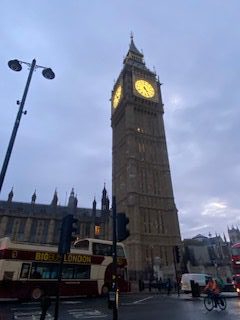“If you don’t tell your story, someone else will.” – Unknown.
“If told by others, your story might be reshaped by their artistic vision, impacting you negatively.” – Kelly Ferraro.
In the realm of public relations, few cases are as illustrative and complex as the recent Kate Middleton crisis. While the Royal Family has navigated numerous public relations crises over the past decades, this situation surrounding Princess Catherine, known affectionately as Kate Middleton, stands distinctly apart. The core of this PR crisis is not a specific incident or revelation but the conspicuous absence of communication: the lack of seeing or hearing from the Princess herself.
This case highlights the complexities of managing high-profile PR crises. Effective crisis management hinges on three key elements: transparency, consistency, and a strong narrative. The five “C’s” — Concern, Commitment, Competency, Clarity, and Confidence — are vital. Misinformation can erode confidence and amplify concerns. However, maintaining a coherent narrative and clear, consistent communication can significantly mitigate these challenges.
The Importance of a United Message
In dealing with public figures, especially those beloved and scrutinized as members of the Royal Family, the absence of clear communication (or a physical absence) can become a fertile ground for rampant speculation and the erosion of public trust. This highlights an important lesson not just for royalty but for all public figures, companies, and even private individuals suddenly thrust into the spotlight: maintaining transparency, unity, and a compelling narrative is not just beneficial—it is indispensable.
In crisis situations, the coherence of the message transmitted to the public becomes more than a matter of clarity—it’s a cornerstone of trust and credibility. When representatives of an individual or an organization emit conflicting signals, the resulting confusion sows seeds of doubt among the audience, which could become a significant blow to the entity’s credibility.
In times of crisis, a unified message does not just convey information—it conveys stability, reliability, and respect for the public’s right to understand what is happening. This is why ensuring message unity in high-stakes public relations is not just best practice; it’s essential for maintaining public confidence and trust.
The Power of a Solid Narrative
The narrative forms the backbone of any campaign, particularly in times of crisis. It is far more than a mere tool of control; it fundamentally shapes public understanding and perception. Without a clear narrative, people tend to speculate, often assuming the worst, turning minor issues into major crises. This effect is evident in Kate Middleton’s situation, where mixed messages and lack of transparency have escalated a potentially minor issue into a significant crisis.
Crafting a solid narrative demands insight, strategic thinking, and an understanding of the audience’s needs. It’s about choosing relevant facts and embedding them in a story that reflects the brand’s values and mission. Key elements include honesty, consistency, and resonance, ensuring the message is both impactful and meaningful. Presence is also crucial. Hence, a narrative is not just a campaign element but the core of effective communication, particularly in crisis management.
The Necessity of Transparency
Transparency is essential for building trust, particularly in an era where information is readily accessible. While it doesn’t require sacrificing all privacy, striking the right balance between openness and confidentiality is key. Obscuring facts can lead to greater public skepticism and speculation. In contrast, embracing transparency helps control the narrative and signifies accountability. Moreover, visibility is crucial; without it, it’s akin to the mystery of the “Wizard of Oz,” where uncertainty prevails about what’s real.
Corporate scandals and high-profile incidents highlight the importance of transparency. By prioritizing clarity and addressing misinformation proactively, individuals and organizations can maintain trust. While reputations may initially suffer, a robust communication plan facilitates recovery. This balanced strategy not only manages the narrative during crises but also upholds long-term integrity.
Kate Middleton’s Scenario: A Case Study
The ‘Kate Middleton Crisis’ sheds light on the essential principles of crisis communication within the unique context of the Royal Family, known for their strict adherence to protocol and privacy. The situation highlights the complexities that arise when discrepancies in communication lead to increased public interest and speculation, especially with high-profile figures.
This incident underscores the universal challenge in public relations: balancing adoration, personal privacy, and public curiosity under intense scrutiny. The case goes beyond being a mere tabloid headline, serving as a crucial study in maintaining transparency, respect, and efficacy in communication strategies amidst personal challenges and public scrutiny.
Conclusion: Harmonizing Transparency, Unity, and Narrative in Crisis Management
The ‘Kate Middleton Crisis’ underscores the importance of a unified message, a clear narrative, and transparency. These elements are fundamental, not just in response to a crisis but as pillars of integrity and trust for any scrutinized entity.
Unified messaging ensures clarity and prevents misinformation. A clear narrative shapes public perception with truth, while balanced transparency builds trust and fosters respectful interactions. The Royal Family’s situation exemplifies how these practices can turn challenges into opportunities to strengthen public trust and engagement.
Effective crisis management is about more than just the immediate response; it’s about consistent, honest, and respectful communication. Delayed responses only hinder the acceptance of truth. In an evolving media landscape, unity, narrative, and transparency remain key to any successful crisis management approach.
Kelly Ferraro is an events columnist at Grit Daily. She is the CEO and president of River North Communications, touting two decades of experience as a corporate communications and TradFi professional. She is also the chapter director for VNTR, and is a three-time mentor with Outlier Ventures. Having worked at Bank of America and Guggenheim Securities, she is well-equipped to design and implement media campaigns aligning with business objectives. Kelly began her career at a hedge fund, developing a love for numbers as they told a company’s true story. She is also passionate about the evolution of blockchain and believes transparency is the key to widespread adoption.
Credit: Source link


Comments are closed.